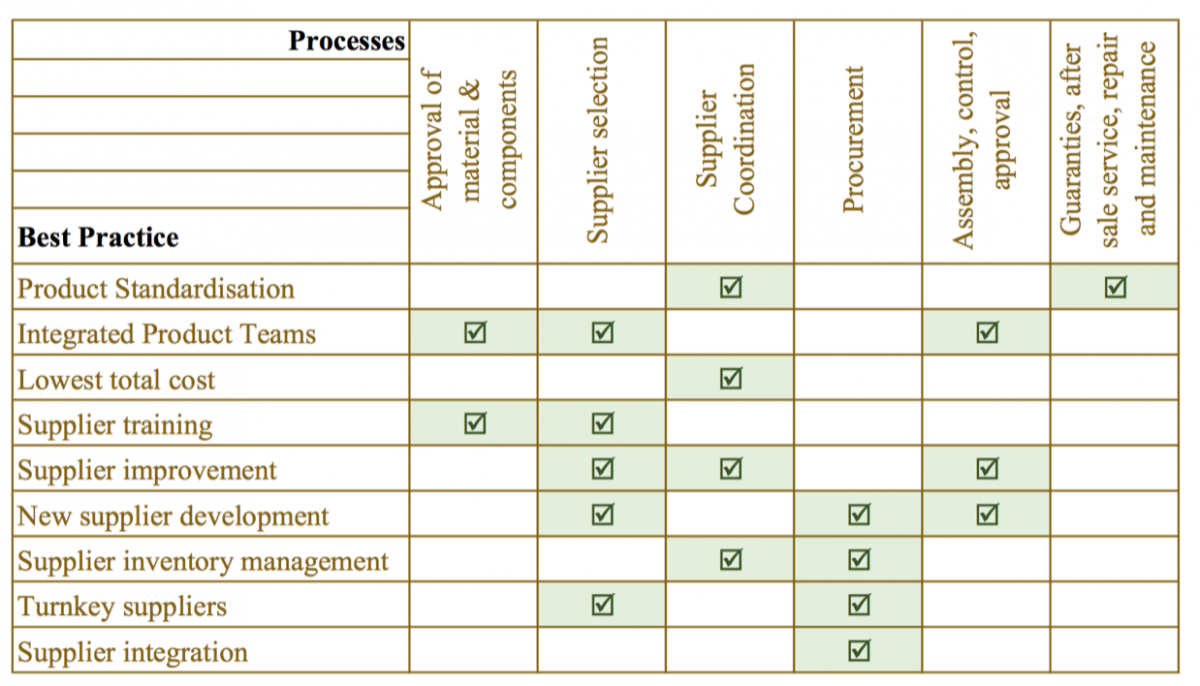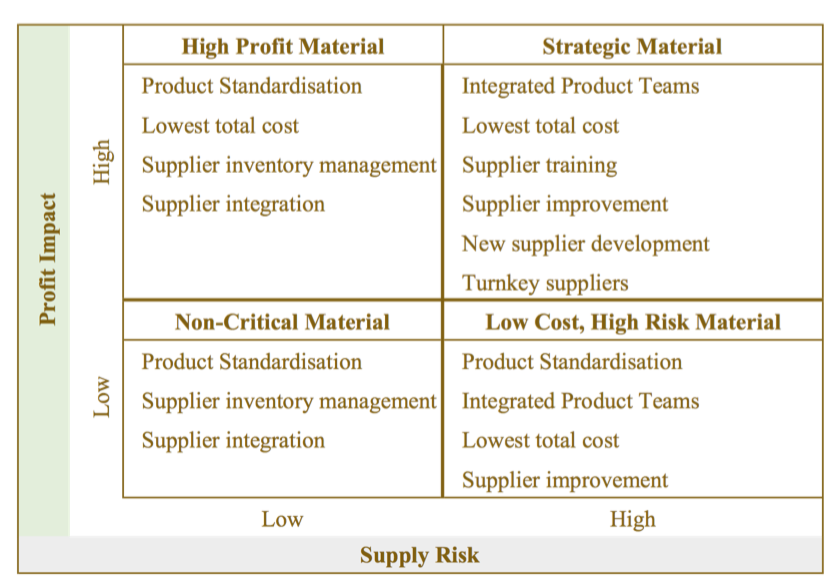- Demand Planning
- Fulfillment
- Optimization
- Transportation
- Urban Logistics
Back to Supply Chain Frontiers issue #61
The shipyard industry involves complex operations and processes, and it is imperative that there is close cooperation both upstream and downstream in the supply chain if yards are to meet the needs of different customers. In addition, the industry is heavily exposed to the bullwhip effect, because global trade variability, as well as financial and other direct and indirect risks, can cause extreme fluctuations in demand that hit the business with little warning.
A high level of synchronicity is not only needed between suppliers and shipyards, but also in the processes that take place within facilities.
In order to achieve an effective management of suppliers, planning practices required by shipyards should include the identification of the yard’s core competencies, documentation of supplier’s responsibilities, achieving the right balance between in-house and outsourced activities/processes, and the creation of long-term strategic alliances with key suppliers.
In an effort to understand the nature and operations of the shipyard industry, a study was conducted by a consortium of Greek Universities and the Malaysia Institute for Supply Chain Innovation (MISI), Shah Alam, Malaysia. A series of unstructured interviews with senior managers of major shipyard players in Greece were carried out. The main purpose of the study was to identify key processes and best practices – including those that are essential to the upstream and downstream coordination of the shipyard supply chain – and measure the level of risk associated with them.
The processes were:
· Approval of material and components.
· Marketing.
· Supplier selection.
· Supplier coordination.
· Procurement.
· Assembly.
· Control, approval.
· Guaranties, after sale service, repair and maintenance.
The documented best practices were:
· Product standardization.
· Integrated product teams.
· Lowest total cost.
· Supplier training.
· Supplier improvement.
· New supplier development.
· Supplier inventory management.
· Turnkey suppliers.
· Supplier integration.
Table 1. How best practices are applied in the different processes in the shipyard industry.

Source: Vlachakis et al. (2016)
The risk profile of each of the above key processes and best practices was mapped based on Kraljic’s (1983) methodology. Kraljic defines four main categories via the relation of profit impact with supply risk:
• High Profit Material refers to standardized components, which are provided by suppliers at low cost and are of high quality.
• Strategic Material usually refers to turnkey systems, which are characterized by high production costs, few suppliers and affect overall product quality.
• Non-critical Material refers to products of mass production used in all types of vessels.
• Low Cost – High Risk Material covers low-cost materials or components that are associated with high risk due to their importance in the final product’s operation/performance.
The categorization of both key processes and best practices is presented in Table 2.
Table 2. Key processes and best practices.

Source: Vlachakis et al. (2016)
Among the key insights of the study is the importance of strategic cooperation between shipyards’ suppliers and customers for improving supply chain performance. Critical to raising performance levels is improving supplier lead times and product quality. In addition, shipyard supply chain performance can be improved by adjusting the best practices to the dictated needs of the project’s specifications. Finally, even though some best practices are appropriate for certain types of key processes, some of those practices can have wider applications.
References
Kraljic, P. (1983), “Purchasing must become supply management”, Harvard Business Review, Vol. 61 No. 5, pp. 109-117.
Vlachakis, N., Mihiotis, A., Pappis, C.P. and Lagoudis, I.N. (2016), “A Methodology for Analyzing Shipyards’ Supply Chains and Optimizing Supplier Selection”, Benchmarking; An International Journal, (Vol. 23, No. 2, pp. 443-455).
This article was written by Dr. Ioannis N. Lagoudis Fulbright Greek Research Scholar at MIT CTL, Director of Executive Education, MISI. For more information on the shipyard industry research contact Dr. Lagoudis at: ilagoudis@misi.edu.my.